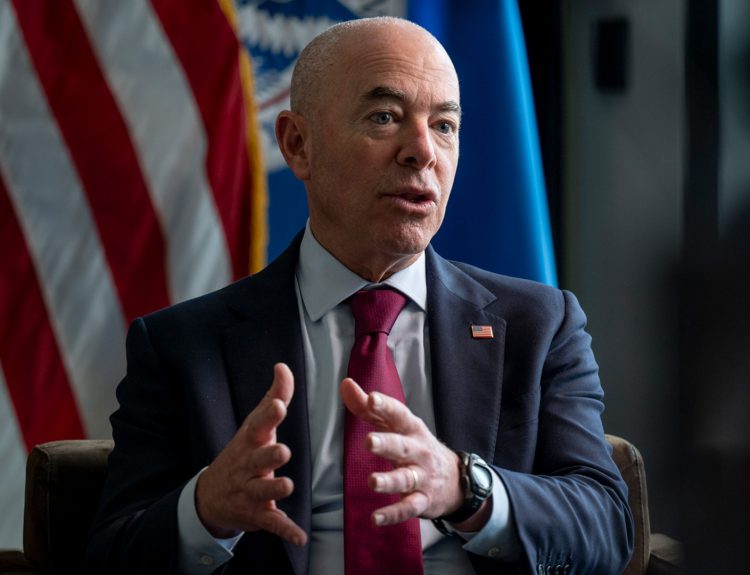Inflation and high interest rates has meant that the conversation about the costs of goods and services in America has been a frequent one over the last several years. Everything costs more right now, from services like haircuts to the groceries we need every week at the store. Some have cited rising costs as a necessary burden in order to pay workers more, but is it really?
Biden’s Economy Is Not Doing Well – So People Think
The conversation around the costs of goods is inevitably linked to the economy, and the Biden administration’s handling of it. The Biden administration has been facing historically dismal ratings when it comes to their handling of the economy, which has become a common topic of discourse.
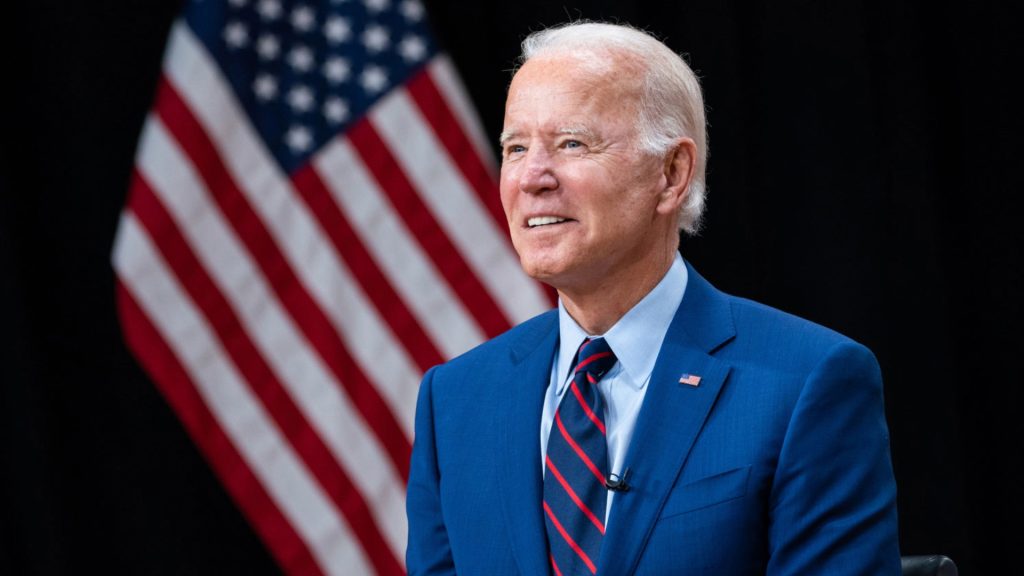
There is an argument to be had about whether the administration is truly handling the economy badly, or if there has merely been a lack of recognition for the virtues of what the administration has done. The administration has been pushing “Bidenomics” for months now, but what does that really mean?
The Administration Has Seen Great Wins For Workers
While it is true that the Biden administration came into power during a particularly lethal time of high inflation for the economy, it is also true that that same inflation has come down significantly due to Biden’s policies.

Not only that, but the Biden administration has overseen a significant growth in Americans’ real wages and compensation, which are higher than they were before the pandemic. Unemployment is hovering near historic lows, and has been for the longest period of time since the sixties, and economic growth exceeded 5% in the third quarter of 2023.
Do the Wins Reflect In Our Costs?
For all of those true economic factors, there is still a perception that the American economy is not doing well, and it is an opinion that has carried across social and political lines. This has led to conversations on the internet that have centered around a somewhat odd centerpiece: the cost of fast food.
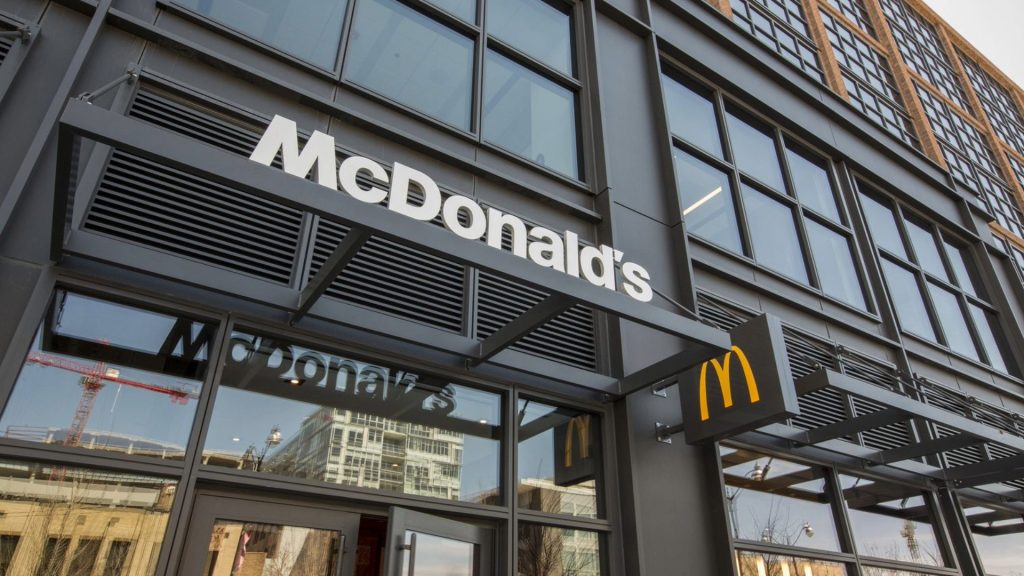
In December, a socialist commentator named Doug Henwood posted on X, formerly known as Twitter, showing his recent bill for McDonalds as an indicator of the economy. He stated, “Can’t imagine why people think this isn’t a great economy. Lunch for three at McDonalds: $44!!”
The Internet Chipping In An Opinion
Of course, everyone had an opinion on Henwood’s statement. Liberals were quick to accuse Henwood of lamenting the result of fast food workers’ gains by complaining about the cost of fast food. After all, fast food workers have been a part of the labor force that has seen historic wage gains, and wage gains necessitate higher costs to offset the labor costs.
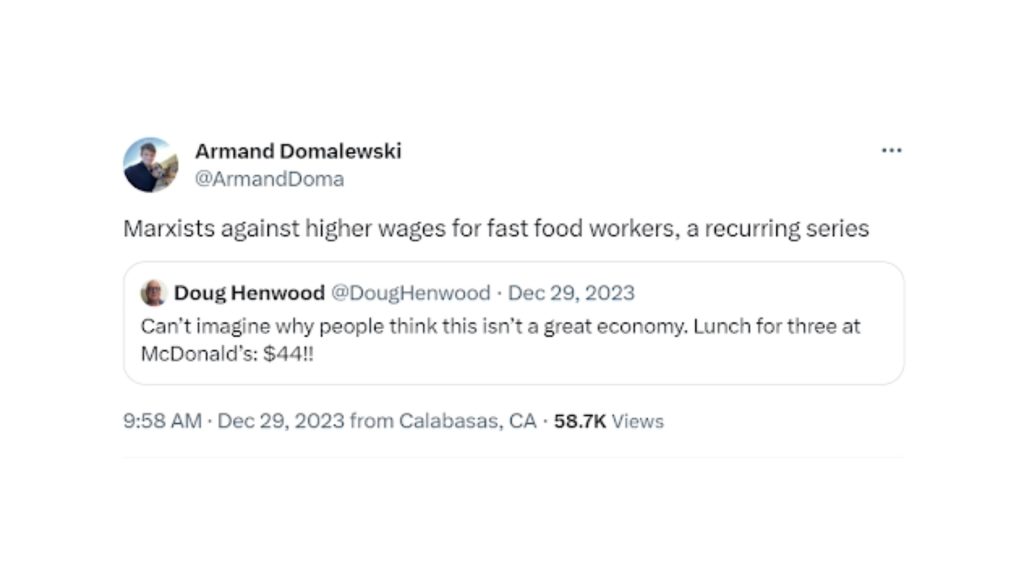
These commenters went even further, pointing out how McDonalds has historically been more expensive in Norway, a socialist democratic country, than it has been in the United States. They accused him of being hypocritical when complaining about the cost of fast food, given his liberal socialist views.
Fewer Thoughts From the Peanut Gallery, Please
Of course, the internet doesn’t offer any room for nuance, and the commentary from the peanut gallery on Twitter is a little unfair. Henwood was quick to respond, explaining that he was merely using his high food bill as an example of the high cost of food in America right now.
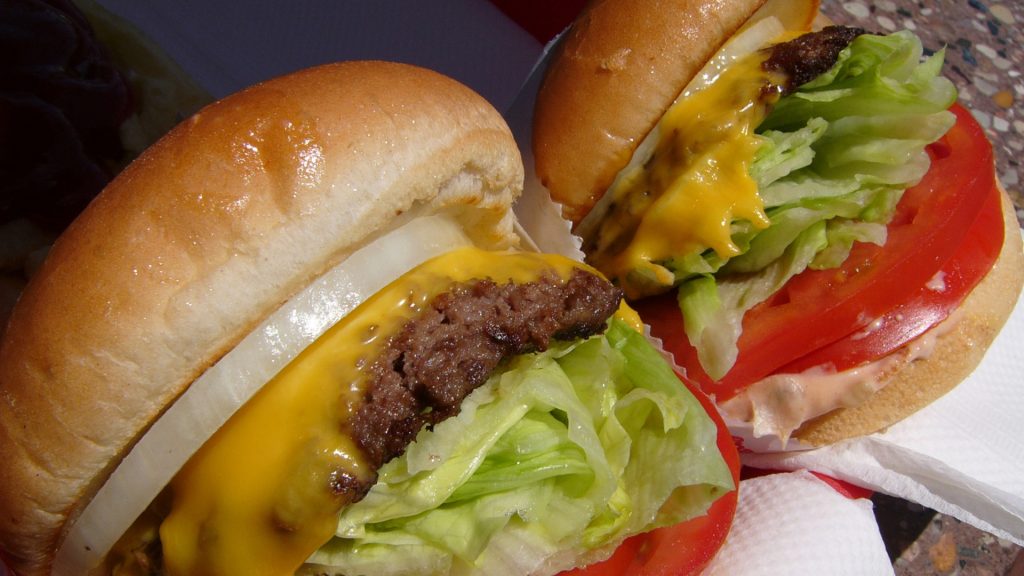
There is some merit to that. Despite the fact that inflation has been coming down at a rapid rate due to aggressive action on the part of the Fed, costs for raw goods are still higher than it has been. These costs have trickled down to the consumer, and the costs of goods such as bread and beef is necessarily reflected in the cost of fast food.
Lots of People Have Been Complaining
Henwood is far from alone in complaining about the costs of goods, including that of fast food. Viral videos made recently have gone wide, complaining about the cost of fast food and other services. For progressives, this sentiment may present a significant political challenge.
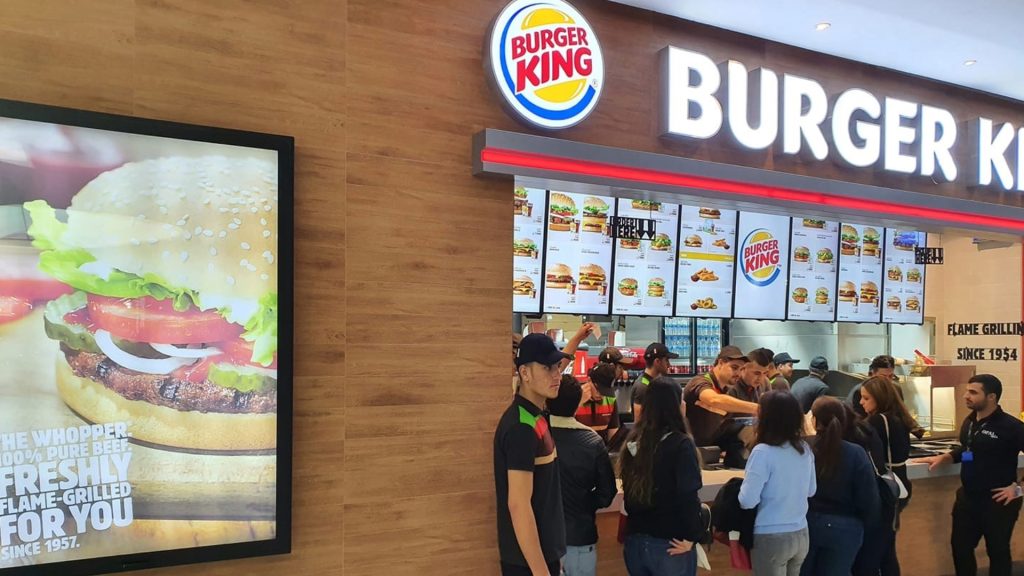
Progressives have been championing higher wages for years. The push for a minimum wage of $15 in the United States has been going on for so long that even that number is no longer the minimum needed for a living wage, and many people are bristling at the costs of offsetting higher wages.
For Wages to Increase, So Must Prices
Reducing wage inequality in any country typically means increasing and absorbing the costs of labor-intensive services, at least in the short term. This cost should, theoretically, be offset by policy changes in the long term, but in the short term, it is often the middle class that has to bear the burden of a rising tide.

Liberals have yet to come up with a talking point that argues for the necessary burden of higher prices in a way that resonates with consumers. This is historically a problem for the progressive party, and now is no exception.
Discontentment Matching Prices Hikes
The last few years have seen a historic rise in economic equality, but there has been a matching rise in discontentment with it. Between 2020 and 2022, workers saw their real wages increase by 5.7% while the top earners in the country saw their wages drop by about 5%.

In this way, economic inequality shrunk, which is a goal that progressives have been pushing for for years. However, at the same time, the public opinion of the economy soured. In a poll done in late 2023, the collective opinion of the economy saw only 20% of individuals rating the economic status of the United States as “excellent” or “good.”
Costs Are Forefront of Many Americans’ Minds
There isn’t necessarily a causal factor behind the discontentment in the economy and the higher wages that workers were earning. During that same time frame, workers saw the purchasing power of their dollar drop due to the fact that inflation was rising faster than wages.

Costs are a concrete reality for many workers, while inequality is an abstract concept. While it is great to celebrate the fact that the gap in income inequality has closed some in the last few years, it doesn’t change the fact that many see the high costs of groceries and choose to blame the workers who are now making closer to a living wage.
Workers Can Afford to be Pickier
There is also some concern to be had behind the higher wages that many are being paid, as well as the high demand in the economy. Collective bargaining power of workers means that many who were stuck in low-paying jobs are now able to seek better positions or higher wages, which has left a worker shortage in some crucial industries.

This includes industries such as child care, which has seen a significant increase in demand at the same time that workers are leaving the field in droves for better paying positions. This has reduced both the availability of childcare, as well as the affordability of it as caregivers are forced to raise their fees in order to offset costs.
Worker’s Struggles Are, As Always, A Political Point
This discontent in the American public has been easy fodder for the Republican Party. The Republican party has been blocking a federal minimum wage hike for years, and they have recently been blaming Joe Biden’s “socialist stimulus bill” as the reason behind major companies such as Chipotle raising their prices to offset higher wages.
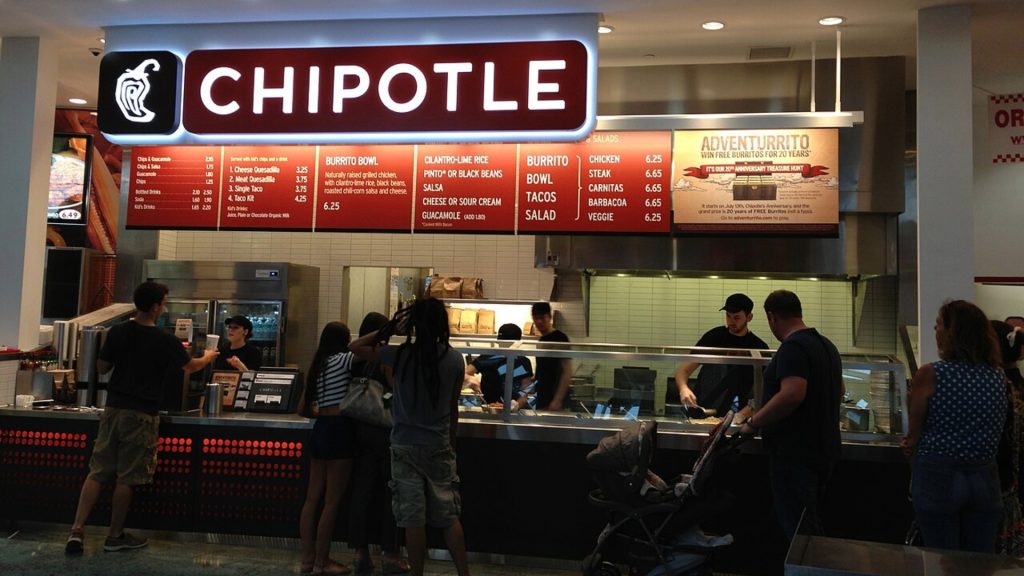
These talking points reveal a key strategy for the Republican Party. The current thought is that playing on citizen’s discontent with high prices is enough of a political boon for them to offset the discontent that many are feeling with income inequality and the high cost of living, and so far, they’ve been right.
Prices Have Exponentially Increased
Since Chipotle indicated that they were going to hike their prices in 2021, menu prices at fast food restaurants have increased considerably. The prices were raised approximately 6% in both 2023 and 2022, and in 2021 prices saw a stunning 8% hike in costs.
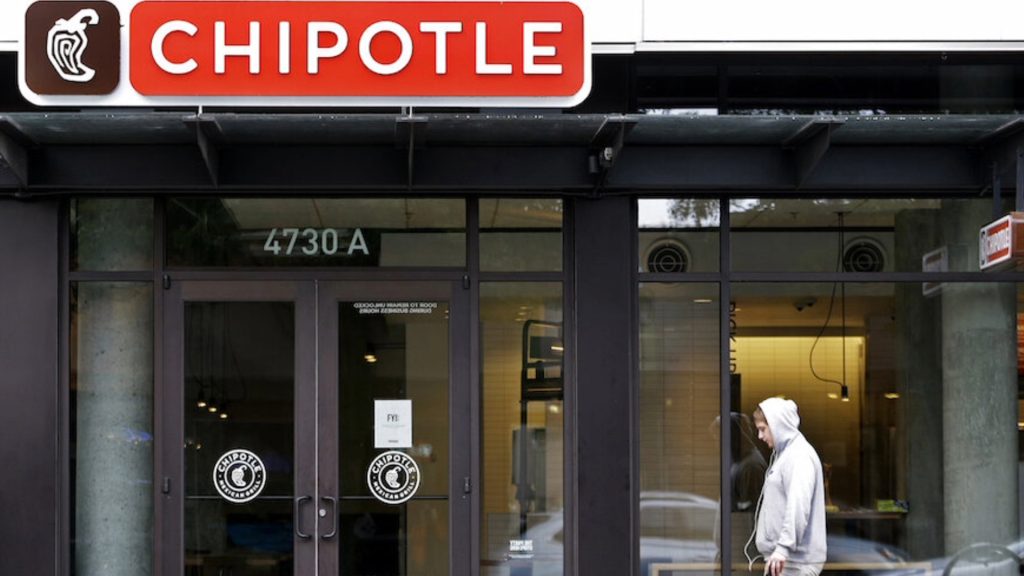
The increase in costs is not equal across all companies either. McDonalds saw its prices increase 10% per year in 2023 and 2022, leading the charge as far as higher prices in the fast food industry. These cost increases are what has led to so many viral videos surrounding the cost of McDonalds.
Worker’s Wages are Only One Part of the Story
In the story of high fast food prices, the cost of workers’ labor is only one part of the equation. According to economists, supplies cost approximately 30% of a restaurant’s budget, rent and non-food materials cost another 30%, and labor costs account for the final third.

This explains why, when meat and bread get more expensive, so do the costs of food. Same for the cost of worker’s wages. But there is an important factor to consider in this story as well. Restaurants and fast food chains alike are not in business to simply break even. They’re there to try and make a profit.
Businesses Mean To Make a Profit
This means that restaurants don’t just charge for what they need to cover operating costs. Restaurants and other companies are charging what they think that people will pay for the same things they’ve always needed and wanted. This is the “profit first” explanation of inflation.
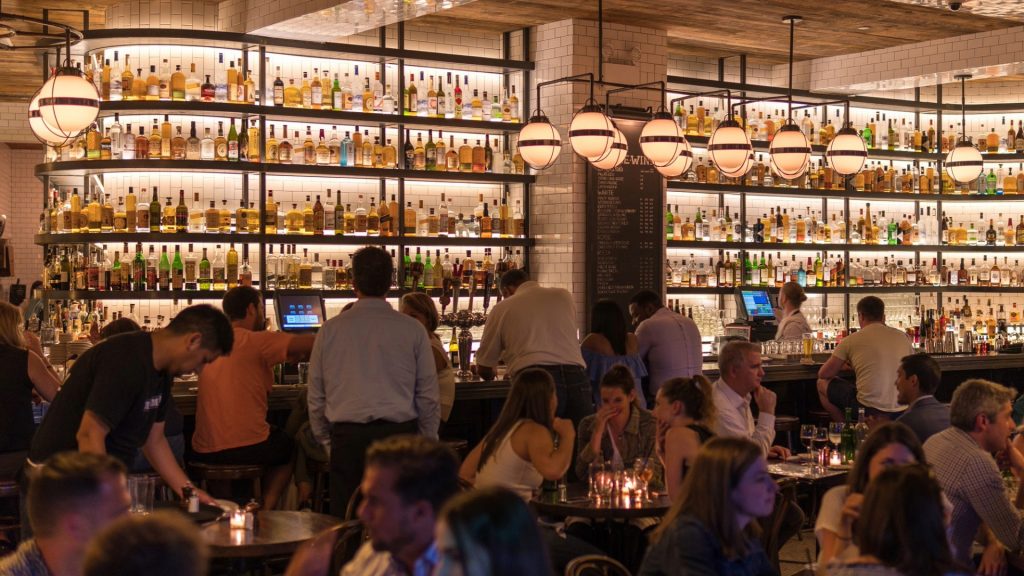
In an economy that is doing well and whose workers have expendable income, companies can charge more for goods and services without risking losing business. Likewise, in an economy where workers might have less money but there is high demand for a good or service, a company can charge what they want, and people will buy it, regardless.
Higher Wages Does, in Fact, Raise Prices
In this way, the improving fortunes of low-income workers are necessarily a part of the story. Not only due to the fact that higher wages motivate companies to charge more for goods and services, but also because they have more money to spend and companies will go out of their way to exploit that expendable income.

And, when the numbers are examined, it does make sense. Between January of 2020 and August of 2023, the average hourly wage at a limited-service restaurant increased approximately 30%. Statistics suggest that for each percentage point that wages increase, prices must increase a third of a percent. If true, higher wages would account for nearly 10% of the increase in costs.
Innovation is Good For the Economy
While the story of higher wages might seem frustrating in the short term, workers with better collective bargaining power and more money in their pockets is ultimately a good thing for the economy. Companies who seek to cut labor costs necessarily must turn to innovation, which leads to improvements in both work and life.

Ironically, the Republican Party has cited this slash in labor as the reason not to raise the minimum wage. But the reality is that when workers can seek better wages elsewhere, or when companies must be creative and innovative in order to cut their costs, both the economy and workers benefit.
The Cost of Progress
There will always be those who gripe over the cost of progress, and make no mistake. The rising average wage of American workers is, in fact, progress, no matter how painful it might seem in the short term.

In the longer term, though, America could be looking at a nation that has better wage equality and more opportunities for those who want them. When a worker isn’t stuck in a low-wage job – or two, or three as the case might be – they have the opportunity to think, to start businesses, to be innovative, and to be an overall more productive and happy member of the working class.






